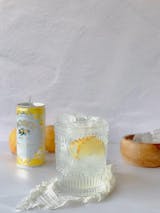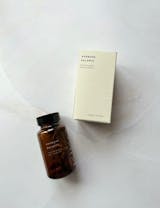How AI increases the trust rift amongst consumers
An in-depth look at why using REAL photography backgrounds are the best choice to produce visual content for your brand

Great product images help sell great products
Whether you’re new to entrepreneurship, or a seasoned creative – photography backdrops are the key to creating professional looking photos for your products, brand or business needs.
Research has shown that product images help convert leads into sales by between 35% - 135%. This means, that consumers want to see plenty of product images, BEFORE making a purchase decision.
Consumers are therefore more likely to TRUST the brand’s product offering if they have clear visuals to peruse beforehand, as well as professional looking and unique images that align with the brand’s visual identity. This is especially important in e-commerce, where consumers need to rely heavily on visual cues in order to make a purchasing decision.

AI-produced product images
With many apps and AI bots claiming to create product images for you quickly and without fuss, using real life photography backdrops is still the most trusted method to achieve high-end, unique results.
Using tangible photography backdrops in your images, means that you can produce consistent visuals. Consistency helps build trust with consumers.

Why are unique product images so important?
Unique product images, that are not retouched or repurposed across the web, are truly the best way to solidify your brand’s unique visual identity.
What’s more, consumer’s are savvy and slow to trust brands who rely on AI in obvious ways. Research has shown that “the use of AI decreases emotional trust” amongst consumers.

When a consumer wants to see the product in action, they are trusting that the product appears as is, without it being manipulated into a more desirable context in any way.
Furthermore, the distrust with AI decreases purchase intention significantly.

You have to ask yourself, does using AI truly align with your brand’s goals? For example, are you an organic skincare brand, using AI to create product images? Ironically, the very nature of AI is that it is NOT organic in its creative process, and so this process is counter-intuitive to your brand positioning, and savvy consumers are least likely to trust your brand’s visual offerings going forward.

What you see, is what you get
It’s more important than ever these days, to show consumers true to life images. Consumers do NOT want to feel tricked or duped by clever AI-generated content.
They want back to basics, real and raw content showing them exactly what your brand or product is all about. Using AI in images causes distrust because of a consumer’s perceived “output accuracy” – in other words, they ask themselves “Is this product actually going to do the job it’s supposed to do?”.

We’re not saying that AI is altogether a malicious and damaging, flawed tool. But we are saying that business owners have to be careful how they use AI and how their consumers will perceive the use of AI across their brand.
We agree that AI certainly has a place in small businesses in terms of automation, for example scheduling email content or using ManyChat on your social posts.
However, when it comes to producing visual content, we are still of the opinion that bona fide product images should be the staple of any hard-working brand to ensure consumer trust is cemented into everything your brand does.

What are the big brands doing with their photography backgrounds?
Big brands still use ‘manual’ creative processes, that involve stylists, studios, photographers, props and photography backgrounds. They create content with a purpose and understand that investing in these creative processes elevates their brand’s visual identity and overall appeal to consumers.
Understandably, big brands invest in tens of thousands of rands several times a year during each season or campaign, in order to create content that sells their product.

Some big brands who use our photography backdrops are MacDonalds, Le Creuset, Yuppiechef, Superbalist, Freedom of Movement, Gelmar, Starbucks SA and Futurelife to name a few. Other image examples from clients can be seen on our Reviews page.
Professional photographers vs Amateurs
Now, while not everyone has a big brand’s marketing budget at their disposal, creating images for your business does not have to break the bank. Whether you’re a professional photographer or stylist on one side, or a small business start-up on the other, our photography backgrounds get the job done for both sides of the coin.
 We always recommend to our small business owners to invest in our photography backgrounds and to invest their time in patiently learning how to take their own product photos using simple tools at their disposal.
We always recommend to our small business owners to invest in our photography backgrounds and to invest their time in patiently learning how to take their own product photos using simple tools at their disposal.
They don’t need fancy lighting equipment nor fancy camera equipment to produce great images for their website or social media platforms.
But they do need a decent camera on their phones as well as a basic editing tool. Read more about how to stand out on a small budget, here. Also, learn how to blur the background using just your iPhone, for ultra professional results, here.

Persistence and consistency is key
We list five solid reasons in our blog piece here, detailing why your business needs photography backdrops. And these Quick tips to getting started with flatlay photography boards or banners will also shed light for start-ups and entrepreneurs on getting started.
And so, while carefully crafted product photos may take some time for start-ups to get right initially, the results will be well worth the effort in the long run.








